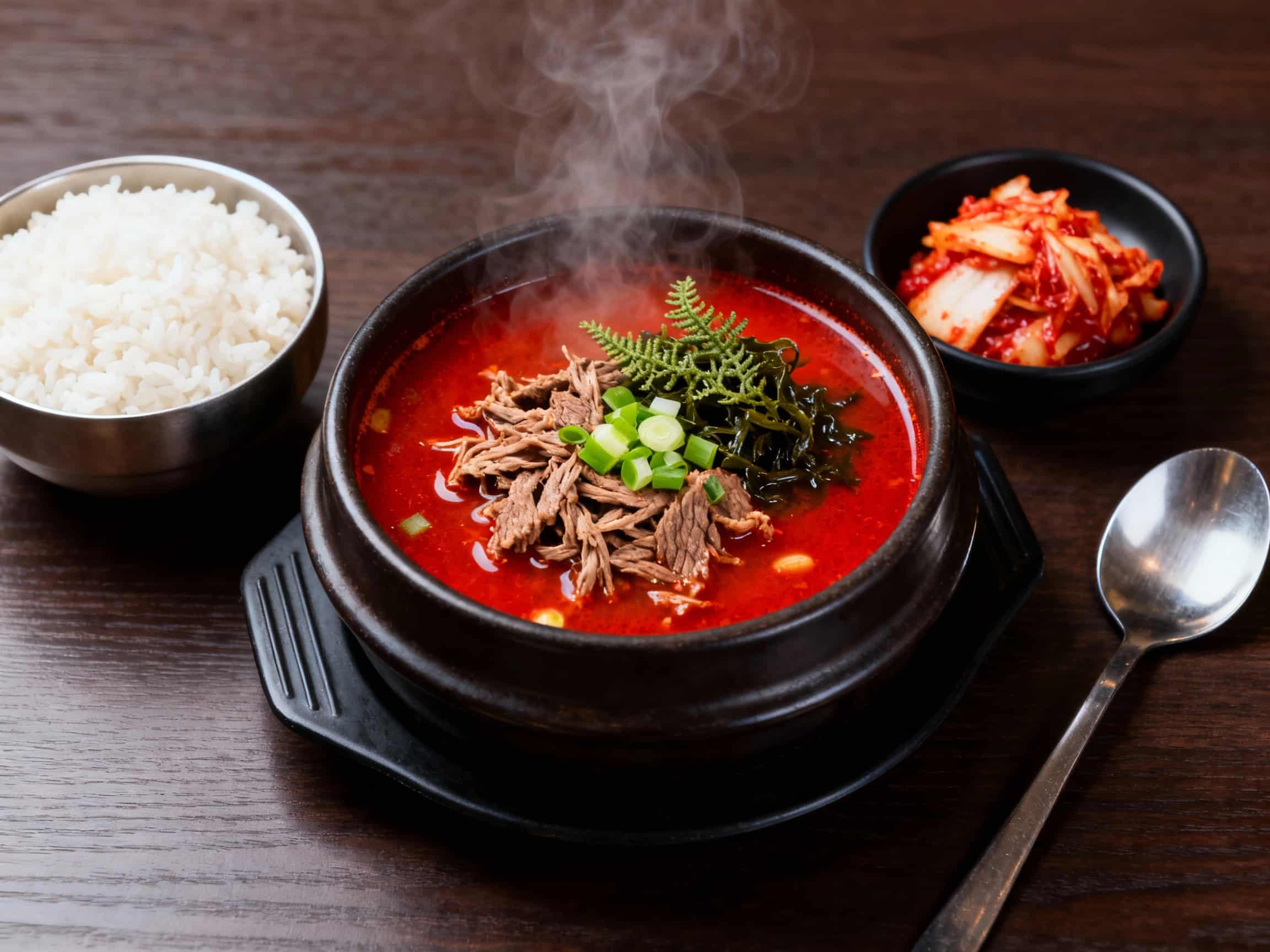
Yukgaejang
육개장
- Country
- Korea
- Region
- Not specified
- Recipes
- 0 Recipes
Dish information
Yukgaejang is a robust and fiery Korean spicy beef soup, celebrated for its deeply savory and intensely flavorful broth. Its origins are often traced back to the Joseon Dynasty, where it was a dish prepared for royalty and nobility, particularly during the hot summer months to combat fatigue (known as 'iyeolchiyeol' or fighting fire with fire). The soup's rich texture and complexity come from slow-simmering shredded beef (often brisket or flank steak) with a medley of vegetables like fernbrake (gosari), bean sprouts, green onions, and sometimes taro stems or mushrooms. The signature red hue and spicy kick are derived from liberal use of gochugaru (Korean chili powder), often along with garlic, soy sauce, and sesame oil. Historically, commoners adapted the royal recipe, using more accessible cuts of meat or even substituting beef with other proteins during leaner times. Today, Yukgaejang is a quintessential comfort food, widely enjoyed across Korea in specialized restaurants, everyday eateries, and homes. It's particularly popular during the colder months or whenever a substantial, warming, and invigorating meal is desired. Its ability to satisfy and energize has cemented its status as a beloved culinary icon.
Timeline
Early forms of spicy beef and vegetable stews begin to appear during the Joseon Dynasty, influencing later Yukgaejang.
Yukgaejang becomes a refined dish served to royalty and nobility, particularly in warming the body during hot summer days.
The dish becomes more accessible to the general public, adapting to local ingredients and preferences across Korea.
Yukgaejang provides a hearty and nourishing meal during and after the Korean War, becoming a staple comfort food.
Specialized Yukgaejang restaurants gain popularity in urban centers, standardizing regional variations.
Related recipes
0 recipesWe'll add related recipes for this dish soon.